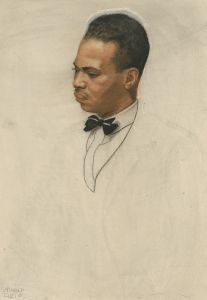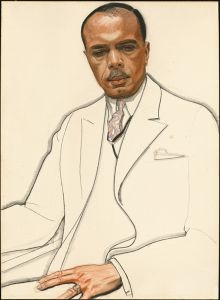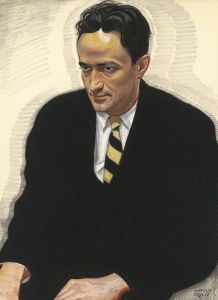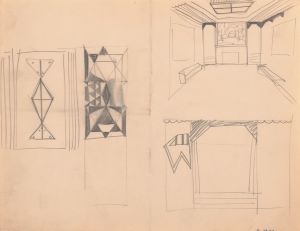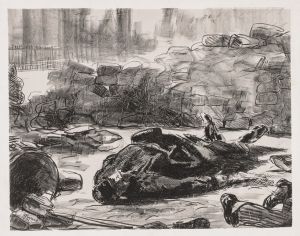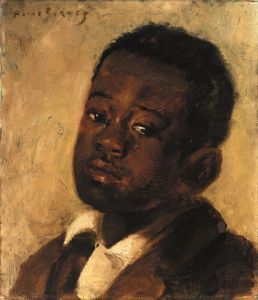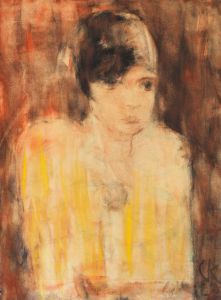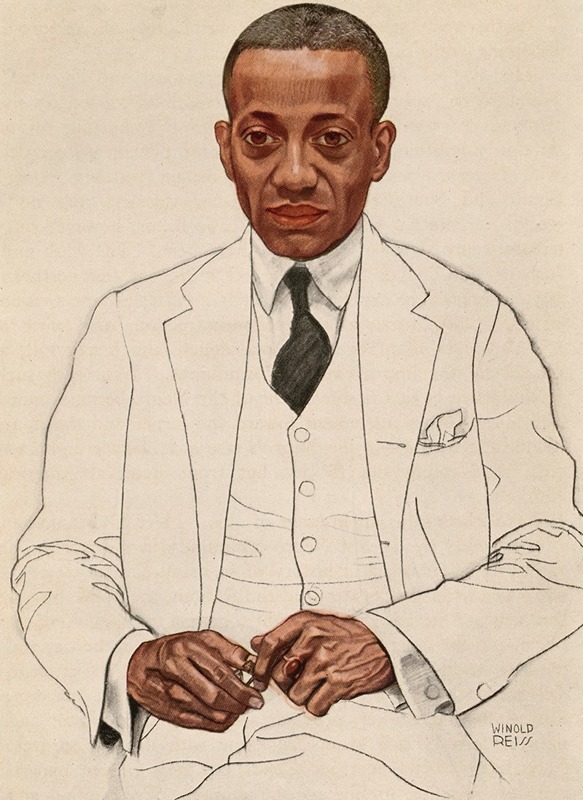
Alain Locke
A hand-painted replica of Winold Reiss’s masterpiece Alain Locke, meticulously crafted by professional artists to capture the true essence of the original. Each piece is created with museum-quality canvas and rare mineral pigments, carefully painted by experienced artists with delicate brushstrokes and rich, layered colors to perfectly recreate the texture of the original artwork. Unlike machine-printed reproductions, this hand-painted version brings the painting to life, infused with the artist’s emotions and skill in every stroke. Whether for personal collection or home decoration, it instantly elevates the artistic atmosphere of any space.
Winold Reiss was a German-American artist known for his portraits and his contributions to the Harlem Renaissance, a cultural movement in the early 20th century that celebrated African American cultural expressions and identity. One of his notable works is the portrait of Alain Locke, an influential African American philosopher, writer, and educator who is often referred to as the "Father of the Harlem Renaissance."
The portrait "Alain Locke" by Winold Reiss captures the essence of Locke's intellectual presence and his significant role in the cultural movement. Reiss, who was born in Germany in 1886 and immigrated to the United States in 1913, was deeply interested in the diversity of American culture. He was particularly fascinated by the cultural vibrancy of Harlem, which led him to create numerous portraits of African American figures during this period.
Reiss's portrait of Alain Locke is celebrated for its vivid use of color and its ability to convey the dignity and intellect of its subject. Reiss employed a style that combined elements of realism with a modernist approach, using bold colors and strong lines to create a striking image. This portrait is part of a larger body of work by Reiss that sought to portray African Americans with respect and individuality, countering the stereotypical depictions that were prevalent at the time.
Alain Locke, the subject of the portrait, was a prominent figure in the Harlem Renaissance. Born in 1885, Locke was the first African American Rhodes Scholar and earned a Ph.D. in philosophy from Harvard University. He was a professor at Howard University and played a crucial role in promoting African American artists and writers. Locke's anthology, "The New Negro," published in 1925, was a seminal work that articulated the aspirations and creative expressions of African Americans during the Harlem Renaissance.
The collaboration between Reiss and Locke was significant in that it represented a cross-cultural exchange and mutual respect between an artist and his subject. Reiss's portraits, including that of Locke, were instrumental in shaping the visual identity of the Harlem Renaissance. They provided a platform for African American intellectuals and artists to be seen and appreciated in a new light.
Reiss's work, including his portrait of Alain Locke, is housed in various collections and continues to be studied for its artistic and cultural significance. The portrait not only highlights Reiss's skill as an artist but also serves as a historical document that reflects the spirit of an era that sought to redefine African American identity and cultural expression.
In summary, Winold Reiss's portrait of Alain Locke is a testament to the artist's commitment to portraying African American subjects with dignity and respect. It stands as a significant piece of art from the Harlem Renaissance, capturing the intellectual and cultural dynamism of the period.






![Design for fine art print, ‘The Mad Dancer’.] [Original study for woodcut print](/imgs/249285/s/winold-reiss-design-for-fine-art-print-the-mad-dancer-original-study-for-woodcut-print-636dd80b.jpg)

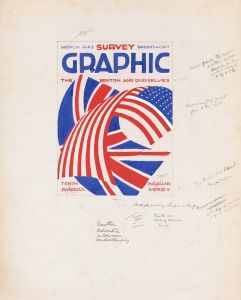
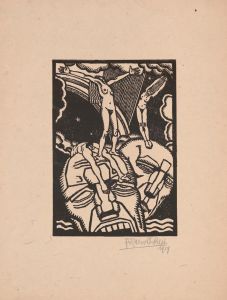
![Studies of New York Coliseum, Columbus Circle, Convention Center.] [Color study perspective](/imgs/249444/s/winold-reiss-studies-of-new-york-coliseum-columbus-circle-convention-center-color-study-perspective-9184607e.jpg)
